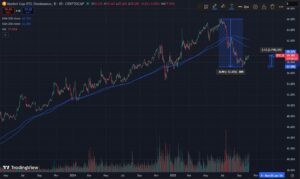Market Outlook for the week of 6th – 10th October

The week begins quietly, with no significant economic events scheduled for the FX market until Tuesday when the focus will shift to the U.S. m/m consumer credit data.
Wednesday’s highlight will be the RBNZ monetary policy announcement in New Zealand, followed by the release of the FOMC meeting minutes in the U.S.
On Thursday, attention will turn to U.S. unemployment claims while Friday will bring key labor market data from Canada, including employment change and the unemployment rate.
In the U.S., if the government shutdown is resolved, labor market data will also be released Friday, alongside the preliminary University of Michigan consumer sentiment and inflation expectations reports.
Several FOMC members are scheduled to speak throughout the week.
In the U.S., the consensus for consumer credit m/m is $14.9B, compared to the prior $16.0B. In recent months, consumer credit has held up better than expected, supported mainly by steady income growth despite ongoing uncertainty.
According to Wells Fargo analysts, July saw a $16B increase in consumer credit, driven largely by a $10.5B surge in revolving debt, the biggest monthly gain since late 2024. Nonrevolving credit also rose by $5.5B. Early indicators for August suggest this momentum continued, with personal spending up 0.6%.
Typically, this release wouldn’t attract much market attention, but with the ongoing government shutdown, investors may turn to alternative indicators like this one for guidance. The data is published by the Federal Reserve, which operates as an independent agency.
As long as the shutdown continues, many key economic indicators will be delayed. This includes this week’s unemployment claims report and the U.S. labor market data.
At this week’s meeting, the RBNZ is expected to cut the OCR by 50 bps, bringing it down to 2.50%. Recently, the Bank has signaled that further easing is likely through the end of the year, with weaker-than-expected economic data reinforcing the case for a more aggressive move. Future policy decisions, however, are expected to remain data dependent.
The committee will likely frame the decision as necessary to bolster demand, while emphasizing that additional rate cuts remain possible if economic conditions warrant further support.
In Canada, the consensus for employment change is 2.8K vs –65.5K previously, while the unemployment rate is expected to edge higher from 7.1% to 7.2%.
This week’s data will be closely watched following the Bank of Canada’s recent rate cut, especially after policymakers emphasized that labor market conditions and export performance will be key factors in determining the path of future easing.
The labor market weakened in July and August, but it is now showing signs of stabilization and analysts from RBC don’t expect further deterioration. Overall employment is up 1%, or 38,000 jobs, this year, but composition is also important, as most of this growth is due to part-time positions. Hours worked will be another key indicator for assessing Q3 growth momentum.
On the trade front, Canada’s August report is still expected to be published despite the ongoing U.S. government shutdown. The trade deficit is projected to widen slightly to around $5.4B, largely due to weaker energy prices. However, continued disruptions in U.S. data releases could make it more difficult to track Canada’s external sector in the coming months.




